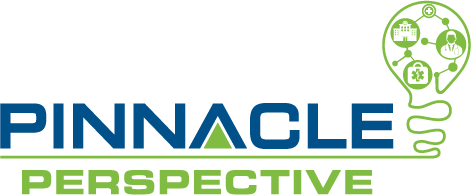
On April 1, 2024, the Centers for Medicare and Medicaid Services (“CMS”) finalized their Calendar Year (CY) 2025 rates for Medicare Advantage (“MA”) and Part D prescription drug programs. With the conversion to version 28 from version 24, along with the statement that payments from the government to MA plans will “increase” by an average of 3.70% ($16 billion) over 2024 / 2025 years, what does this mean for value-based care in general?
With the federal government expecting to pay between $500-$600 billion dollars in MA payments to private health plans in CY 2025, it appears that Medicare Advantage is getting a “bump” in payments, but how did we get here? CMS considers numerous factors to calculate the growth rates, the largest being the quarter four fee-for-service data and calculates into the ratio the updated version 28 MA risk model.
With the release of the CY 2025 Advanced Notice, below is what we can expect moving forward into 2025:
| Financial Impact | Advanced Notice CY 2025 | Rate Announcement CY 2025 |
| Effective Growth Rate | 2.44% | 2.33% |
| Rebasing / Re-Pricing | Based on geographical adjustment index which was not available during the release | 0.07% |
| Change in STAR Ratings | -0.15% | -0.11% |
| MA Coding Pattern Adjustment | 0% | 0% |
| Risk Model (v28) Revision and Fee-for-Service Normalization | -2.45% | -2.45% |
| MA risk score trend | 3.86% | 3.86% |
| Expected Average Change in Revenue | +3.70% | +3.70% |
As we can see from the financial impact of the risk model revisions and fee-for-service normalization, it appears that FFS plans are still outpacing MA plans with a reduction in the normalization rates. We must remember that beginning CY 2023 (with the October 1, 2022, updates), the HCC model significantly decreased the number of ICD-10-CM diagnosis codes that would allow for appropriate risk adjustment factor assignment. The update to v28 also constrained many of our coefficients. For the many who treat diabetic patients with complications, this significantly impacted their RAF scores. While CMS continues to phase in the updated risk adjustment model (proposed 67% of the risk score calculated on the updated 2024 model with 33% remaining calculated on the 2020 model), we are still looking at a significant decrease in shared savings for those that participate in some type of value-based care system. The MA risk score considers a “trend” in risk scores across plans and does not account for normalization or coding patterns adjusting to MA risk scores.
The 2020 and 2024 trend in CMS-HCC risk adjustment models used the CY 2024 phase-in of model 28 and blended this separately with the available 2020-2024 adjustment models. According to CMS, the risk score trend is 3.30% under the CY 2024 HCC model and 5.00% under the 2020 CMS-HCC model. CMS then takes these years and the models and “blends” the scores, which is where we land at the phase-in of 67% of MA risk score under 2024 and 33% under the 2020 models. Based on the calculations, it appears that the MA risk score trend for CY 2025 will increase to 3.86%.
Another impactful change was the MA Risk Adjustment Data Validation (RADV) Appeals Process. The final rule revised the process where MA sponsors cannot request a medical record review determination and a payment error calculation appeal at the same time. This means that MAOs must request a medical record determination through the RADV process. There is also a new requirement that if the CMS Administrator does not elect to review the medical records within ninety (90) days, the hearing officer’s decision becomes final. This means if we receive a notification by RADV, it is imperative we take heed and ensure our medical records are reviewed on time.
The Medicare Part D (Pharmacy) Medication Therapy Management Program (MTM) finalized targeting drugs that would provide more consistent, equitable, and expanded coverage under these services. There were three (3) separate decisions that came out of the Final Rule:
- To add HIV / AIDS to the list of core chronic diseases. This will require sponsors to include all ten (10) core chronic diseases previously identified by CMS within the target criteria.
- All plan sponsors are required to include all Part D maintenance drugs and continue retaining all flexibility for Part D drugs within the targeted criteria.
- CMS revised the MTM cost threshold to be the same and / or similar to the average annual cost of eight (8) generic drugs under the MTM program. Unfortunately, CMS did not finalize the proposed plan to reduce the maximum number of drugs the plan sponsor can require. CMS did set the annual cost of the drugs at $1,623.00 for CY 2025.
With all of the changes culminating in CY 2025, especially with the new calculation of v28 being sixty-seven percent (67%) of our risk score calculations, staying up to date is imperative. The changes could not only affect quality, risk, and compliance but could also affect your shared-savings and Accountable Care Organizations. Please contact Amy C. Pritchett, AAPC Fellow, RAP, CRC, CPA-RA, CCS, CPMA, CPCO, CDEI, CDEO, CDEC, CANPC, CASCC, CMPM, AAPC Approved Instructor | Approved ICD-10-CM / PCS Trainer at APritchett@AskPHC.com for more information.
